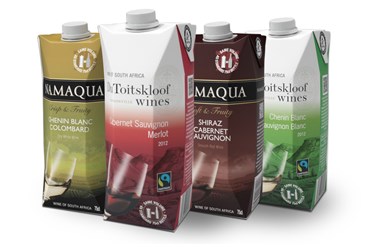Tetra Pak Now Putting Wine In Cartons
By Alec Italiano, contributing writer

Premium wine producers are seeing the advantages of cartons over glass
Packaging once reserved for juices and dairy products have expanded into a new field: wine. And not just any wine at that; premium wine producers are experimenting with the idea to distribute and package their products in Tetra Pak cartons. Boxed wine already is common in liquor stores and is generally in the “economy” section, but now producers such as Gallo, Zumuva, and Kattenburger are jumping on board with the idea of packaging in cartons.
Tetra Pak’s numbers show that they packaged 3 percent more wine last year at 1.7 billion liters — accounting for 7 percent of the world’s still wine industry. Those using cartons will realize a number of advantages. These are user-friendly cartons: easy to pour and not fragile. And from the standpoint of the distributor, cartons are lighter, more durable, limit excess product, and give graphic designers more surface area for designs.
Often, when a company releasing new, lighter packaging, it makes claims that this helps the environment, making shipping easier and therefore causing less impact on the environment. And, in this case, those claims are accurate. In a traditional glass bottle, the glass itself is 40 percent of the gross weight. Compare that to 4 percent of gross weight with Tetra Pak’s carton packaging. Couple lighter packaging with the added portability of a less fragile product, and shipping becomes a whole lot simpler and less expensive.
While the numbers show this sector growing, the stereotype of boxed wine, or in this case wine in cartons, is that is has less luxury appeal than the traditional glass container. The first step of breaking down this perception is to actually put quality wine in a carton, and that has begun to take place with the aforementioned companies. The time that it will take people to notice is another story.
